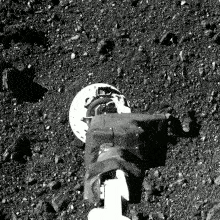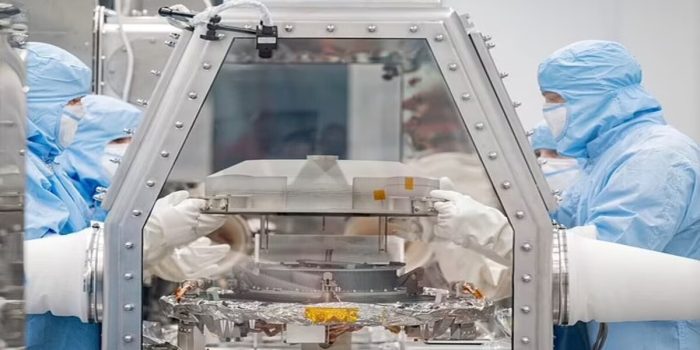NASA’s OSIRIS-REx spacecraft, on a daring mission to an asteroid 200 million miles away, has uncovered a surprising discovery. When the space capsule was opened on Tuesday, scientists found a mysterious black material lining the inside of the lid. This unexpected find has temporarily halted their work.

Unlike the rocks and dust collected from the asteroid’s surface, this black material appears finer, almost like grime on a dirty car. NASA plans to conduct a quick analysis to determine its nature.

Dr. Brad Tucker, an astrophysicist, believes it’s also likely material from the asteroid, explaining that during the original sample collection, so much material was collected that the capsule couldn’t close properly. This led to some leakage of asteroid material due to a jammed mechanism, a problem that was eventually resolved.
Professor Trevor Ireland, a geochemist, concurs, suggesting that the black dust may have been stirred up during the sample collection because in microgravity, dust can easily spread, even back onto the spacecraft.

The precious cargo in the capsule weighs about 8.8 ounces, roughly equivalent to half a box of cereal. Despite its modest size, NASA believes it will provide valuable insights into asteroid composition and help us better understand asteroids that could pose a threat to Earth. These pebbles and dust from Bennu represent the largest haul from beyond the moon.
The OSIRIS-REx mission began in 2016 when the spacecraft launched from Cape Canaveral, Florida, and reached Bennu in 2018. After nearly two years of mapping, it collected the sample in October 2020, embarking on a round trip of 3.86 billion miles. The capsule carrying the sample landed in Utah in September 2023, and it was transported to NASA’s Johnson Space Center in Houston, Texas.
Scientists at the Johnson Space Center discovered the black dust and debris when they opened the capsule. Over the next few weeks, they will carefully disassemble the capsule, weigh the sample, and analyze the rocks and dust. A quarter of the sample will be shared with over 200 researchers from around the world to study its implications for understanding the solar system’s formation and Earth’s habitability.

Professor Nick Timms at Curtin University hopes the sample might contain “molecular precursors” that shed light on the origin of life. Precise measurements of the sample’s structure, minerals, and geochemistry will help scientists understand its formation processes and history.
Bennu, the asteroid, orbits the sun every 437 days and has occasional close approaches to Earth, making it a “potentially hazardous object.” Studying this sample can enhance our understanding of its composition and help us prepare for possible impacts.

NASA intends to reveal its initial findings from the Bennu sample analysis at a news conference on October 11, which will be available for live streaming on the agency’s website.


